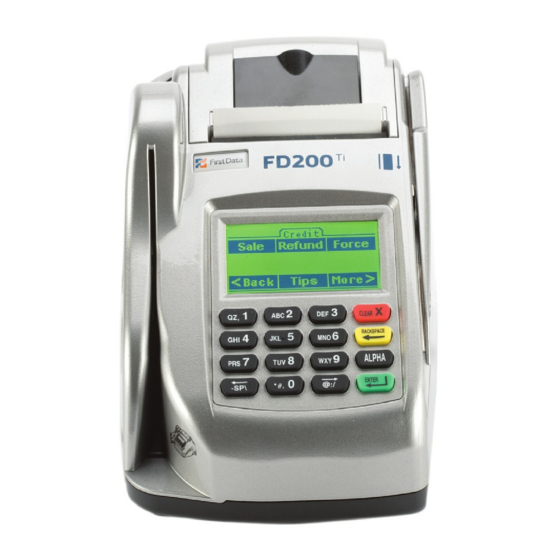
First Data FD100 Quick Setup Manual
Fd wi-fi terminals
Hide thumbs
Also See for FD100:
- Quick setup manual (7 pages) ,
- Quick reference manual (4 pages) ,
- Quick tips (2 pages)
Advertisement
Table of Contents
Advertisement
Table of Contents














Need help?
Do you have a question about the FD100 and is the answer not in the manual?
Questions and answers